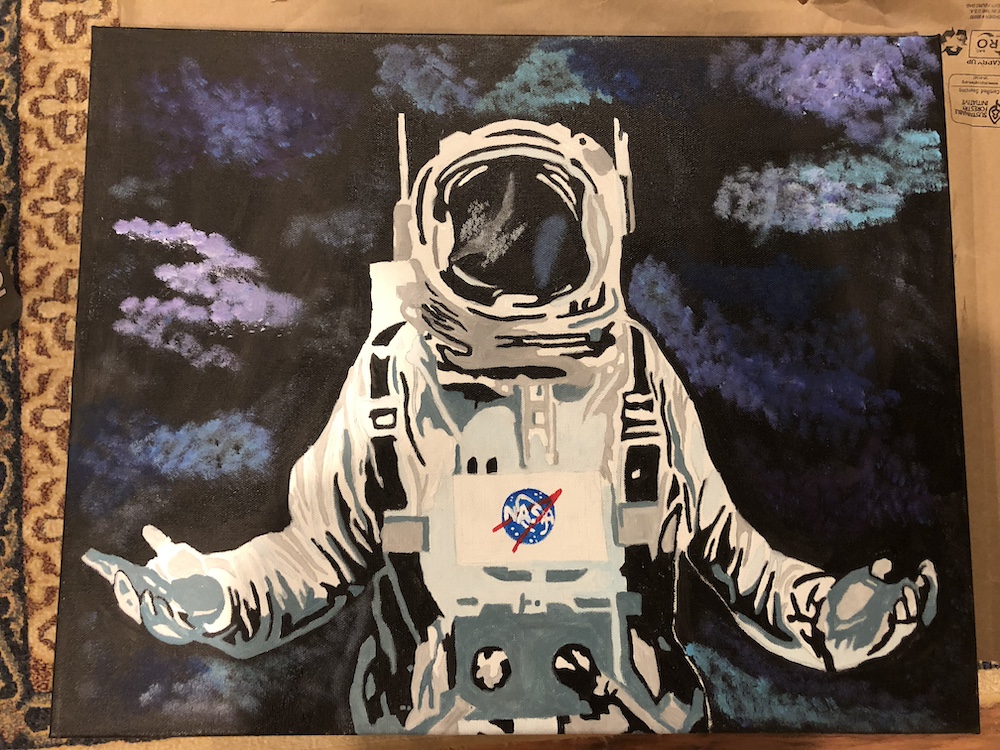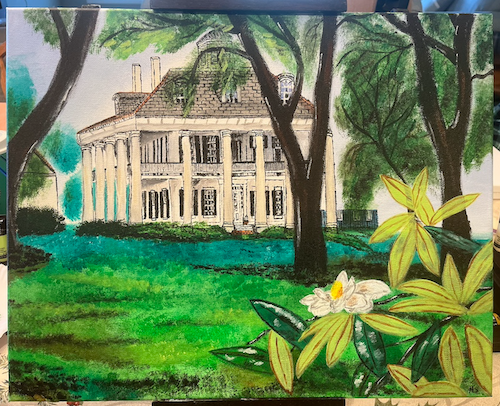Megan Saalwaechter is an MS1 student at the Heersink School of Medicine. The first year is always an adjustment, so the Heersink communications team met with her during orientation last July and again during the second semester to see how her first year of medical school was going. Megan Saalwaechter, M.D. Candidate
Megan Saalwaechter, M.D. Candidate
During orientation, Saalwaechter was asked why she decided to go to medical school. She said:
“My grandfather got sick with cancer during COVID-19. It pushed me to volunteer for Hospice because I had a really great experience with the Hospice group that worked with my grandfather. Through that, I became interested in finding a pathway into health care.”
Saalwaechter’s experience with medicine started with her grandmother, who was a nurse. Her mother was sick while she was growing up, so she watched her grandmother complete tasks such as starting an IV, giving shots, and gauging blood pressure growing up. Saalwaechter saw the realities of medicine from an early age, but it became a passion during the pandemic.
“When my grandfather went through hospice, it opened my eyes to the realization that my path doesn't lie with just engineering—maybe there’s something more,” said Saalwaechter. “Then, during my biomedical engineering undergraduate research project, I noticed that my true passion was talking to patients, seeing their experiences, understanding the science behind why pressure injuries were developing, and treating them.”
Saalwaechter’s undergraduate focus on biomedical engineering allowed her to research and develop a device for treating pressure injuries as a capstone project, and it remains a passion for her.
“Engineering is still one of my interests because it goes hand in hand with what I want to do as a provider—seeing new technologies emerge, learning how to use them, and recruiting engineering students,” said Saalwaechter.
 Artwork by SaalwaechterSaalwaechter is interested in pursuing the primary care track and intends to receive further training that will allow her to focus on one population subset and treat all aspects of the patient, such as pediatrics or geriatrics. Seeing health care from both the perspective of the patient and the health care provider inspired Saalwaechter to want to give back to patients.
Artwork by SaalwaechterSaalwaechter is interested in pursuing the primary care track and intends to receive further training that will allow her to focus on one population subset and treat all aspects of the patient, such as pediatrics or geriatrics. Seeing health care from both the perspective of the patient and the health care provider inspired Saalwaechter to want to give back to patients.
“That's something I really want to bring into being a doctor—not only treating patients but helping them through hard times when all hope seems to be lost, but you have a support community around you,” said Saalwaechter.
Though medical school is very different from what Saalwaechter expected, her sense of purpose and focus on community-building have been significant factors in helping her adjust.
“I thought medical school was going to be all study and nothing else, but I think I've found a really good balance and support group at UAB to push me to keep going in my classes but also take breaks and make sure my mental health is good enough to take the rigors of medical school,” remarked Saalwaechter. “I think I'm just starting to settle into finding my place.”
 Artwork by SaalwaechterTo keep her grounded and balance medical school with life, Saalwaechter enjoys running, working out, spending time outside in the fresh air, giving reading lessons to local elementary school children, reading, and painting.
Artwork by SaalwaechterTo keep her grounded and balance medical school with life, Saalwaechter enjoys running, working out, spending time outside in the fresh air, giving reading lessons to local elementary school children, reading, and painting.
As for the future, Saalwaechter is engaged and looking forward to getting married and living in the same city as her sisters again. In the long term, she wants to facilitate health care services in parts of rural Alabama.
“After medical school, I want to stay within academic medicine, at least for a few years, to connect with undergrads in biomedical engineering and help the new generation of doctors come up,” said Saalwaechter. “Eventually, my goal is to give back to rural Alabama. I'm from the outskirts of Huntsville, and we had to drive into town to go to the doctor. I think it'd be nice to give back to areas where people don’t have as much reach to get to a physician, nurse practitioner, or anything like that.”